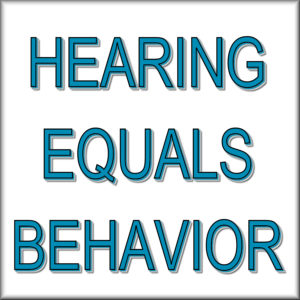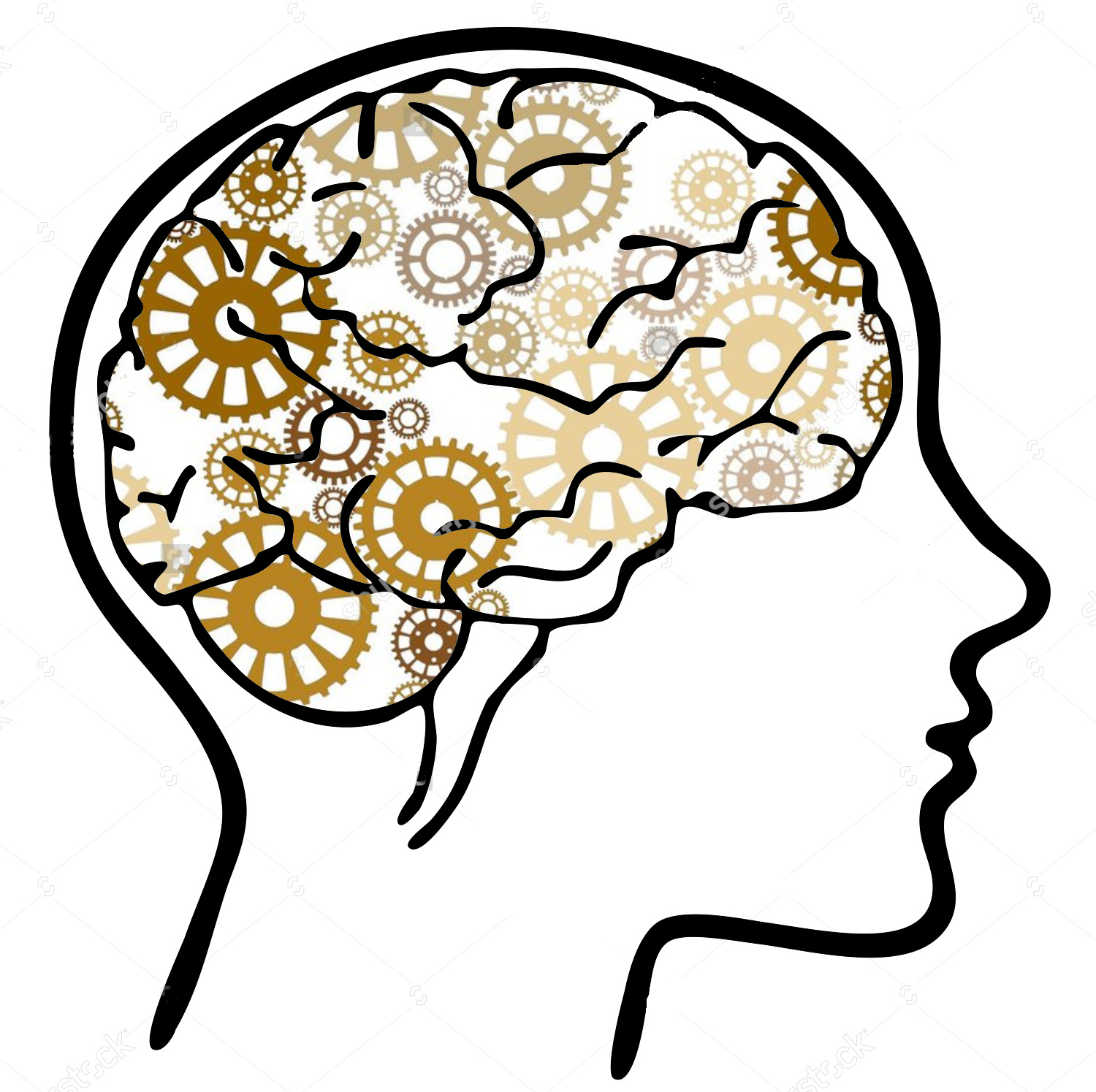
Very recently we had a client that decided to forego the opportunity to have her son do auditory integration training therapy. She made this decision after finding some articles online that cast doubt on the efficacy of the AIT program. We would like to share our reply with you:
Hello Parent,
Thank you for the links. I glanced over the articles and am disappointed that there are several inaccuracies in them which make AIT sound unproven. In fact there are numerous studies that have proven positive results for the Berard Method of AIT. It is unfortunate that some of the articles, for example the link you gave from ASAT, lump many different auditory programs together and it is true that many of the others have only anecdotal evidence and not formal double blind placebo studies to back up their claims. There is of course always room for more research with any treatment. However, there is a fair amount of decent studies on Berard Method AIT. (I have attached some for your review).
Like many therapies, there are going to be people that dispute the efficacy particularly if they are promoting their own programs as has been the case with the person who overwrites in to Wikipedia (he does and promotes the ABA method and references old information such as the Audiokinetron being banned which is not the case currently). We believe that our 20+ years of experience (as well as Dr. Berard’s 40+ years) with thousands of clients attests to the positive changes in their children’s lives and their success speaks for the legitimacy of the program.
From what we have found, the people that are opponents of AIT are insisting on an NNT of 1. This means that they are demanding a 100% success rate which is simply not reasonable for any therapy, no matter how effective. They are claiming that the studies are flawed because they want to see concrete proof in the form of numbers to prove efficacy, but how do you place a numerical value on, for instance, a child that smiles when passing a loud motorcycle instead of his previous behavior of covering his ears and crying (actual anecdote from a client)? Or the child that doesn’t run out of the room when her mother is washing dishes because the sound of the silverware clanking isn’t an excruciating pain anymore?
While we cannot provide an exact number, we will say with confidence that less than 20% of our clients fail to see at least a minor level of improvement in their child. Likewise, we can attest that we have never had a single situation where the parents reported any long term negative effects. This means that even if a client/child does not gain some improvement from the program, at least no harm is done. AIT is completely safe and non-invasive.
Please feel free to contact us if you would like to discuss this further now or in the future.
Regards,
Sarah Gewanter, MSSW, Director
If you would like a copy of the research studies we have compiled, please contact us at info@aithelps.com or call us at 828-683-6900 to give us your mailing address to receive this information.
All posts by admin
 In this newsletter, we celebrate and honor Autism Awareness Month. Autism has become a more common challenge for a higher proportion of the population than ever before. Auditory Integration Training (AIT) is one of the programs that has been highly effective in the treatment of the symptoms of Autism Spectrum and has been in use for over 40 years. As such, approximately 50% of those we have worked with over the past 25 years of service have been on the Autism Spectrum. We hope that you join us in helping to educate everyone regarding Autism Spectrum and what can be done to expand awareness of the condition and treatments available. Please spread the word and pass this on to others.
In this newsletter, we celebrate and honor Autism Awareness Month. Autism has become a more common challenge for a higher proportion of the population than ever before. Auditory Integration Training (AIT) is one of the programs that has been highly effective in the treatment of the symptoms of Autism Spectrum and has been in use for over 40 years. As such, approximately 50% of those we have worked with over the past 25 years of service have been on the Autism Spectrum. We hope that you join us in helping to educate everyone regarding Autism Spectrum and what can be done to expand awareness of the condition and treatments available. Please spread the word and pass this on to others.
Autism is a complex disorder that affects no two people the same. As most of you know the criteria for the diagnosis has changed with the new DSM-V diagnostic manual. Ultimately when dealing with Autism Spectrum Disorder (ASD) we should identify what the specific issues and needs are for each individual person. As the new description identifies, Autism is a spectrum of issues from low to very high functioning, brilliant people, and from severe to mild. Therefore, it is inappropriate to prescribe one single solution to everyone. One person may have learning disabilities but be able to effectively communicate their needs, while another may be unable to speak but able to learn anything presented to them. Of course, these are just two of the many aspects of the Autism Spectrum. Additionally, there are still many theories regarding the cause – some hypothesize a genetic basis, others identify environmental causation or a combination of both. Hopefully in the future, it will become more clear and give rise to more appropriate treatments. These differences are part of the enigma of Autism – its vast and complex pool of challenges and much more research is needed.
While the Berard method of Auditory Integration Training is able to treat a wide variety of conditions and issues, perhaps the largest group of people that are most often helped by this truly ingenious program are those on the Autism Spectrum.
Each potential client is evaluated to identify whether they are good candidates for the AIT program. The program is then custom-made for each person and changes as they improve over time. Since it is not a “one-size fits all” generic program we find it to be successful with the majority of clients. A good AIT practitioner will ask a range of questions related to many aspects of a client’s life. Some, but not all, of the areas that will be discussed are: sensory issues, dietary habits, allergies, social development, learning patterns, language/verbal skills, emotional responses and more.
AIT does not represent itself as being a cure for autism, although many of our clients have made remarkable recovery from serious autistic behaviors and have gone on to lead fruitful and independent lives. Instead, AIT works in a way that teaches the brain to form new neural pathways resulting in a period of retraining so that information received through audio channels is translated differently.
All people have challenges. Those with Autism often have a harder time than others due to the ignorance of many people about the disorder and the fact that it is a neurological and sensory based condition rather than something physical you can point to like a broken leg. Part of our mission is to help educate and share knowledge so that there can be greater understanding and awareness. Please join us in this mission.
To learn more about how AIT can help you, your child, or someone you know, please call to arrange a free 15-minute consultation with a certified Berard method AIT practitioner with no obligation. Call 1/828-683-6900 to schedule a time today.
Regards,
Sarah G.
 Of course a parent’s primary concern is the safety and well-being of their child, so often the first question we are asked when a parent contacts us is, “Is this program safe for my child”. The answer is an absolute yes. The Berard method of Auditory Integration Training is a safe and non-invasive therapy.
Of course a parent’s primary concern is the safety and well-being of their child, so often the first question we are asked when a parent contacts us is, “Is this program safe for my child”. The answer is an absolute yes. The Berard method of Auditory Integration Training is a safe and non-invasive therapy.
I have been a Berard AIT practitioner for over 20 years and in that time I have not had a single client report any long-term negative side-effects of having done the program. There have been reports from other practitioners where a client reported that the AIT had caused extreme anger or abreactions, but in each case there was a bio-medical cause that was later identified as the cause of the unexpected change.
Some clients have reported some short-term reactions during the program such as irritability, increased tantrums, and tiredness, but these are all reactions that are actually a good sign. It means the brain is working, much the same way a student might become tired and irritable when studying extra hard for an upcoming exam. Either way, these reactions will resolve over time as improvements also continue.
Some parents report that their child becomes more confident and assertive after completion. Over time confidence and assertiveness is expected with improved brain function. When this happens the child may need help learning to temper their enthusiasm which, in some cases, can be mistaken for defiance or disobedience.
In life, everyone has an ax to grind, including me, Sarah Gewanter. My ax is that after doing AIT for over 20 years, practicing psychotherapy for 30 years and that AIT has been an evidence-based proven program for over 50 years, there are still those that challenge the efficacy of AIT.
In spite of all the ups and downs, much money spent on legal expenses, etc, we wouldn’t stop doing AIT for the entire world. My husband and I have no regrets. If you know anyone who says they have had any negative attitude towards AIT, I invite you to give us their name and contact info so that we can engage them in a meaningful discussion regarding the facts of Auditory Integration.
Warm regards, Sarah Gewanter, MSSW, Adjunct Professor, Retired.
 Before beginning the Auditory Integration Training (AIT) program, it is logical to pursue biological interventions first in order to build a strong foundation for the body and the brain functions. A body that is free of toxins, allergies, chemicals and infection is more likely to achieve better results.
Before beginning the Auditory Integration Training (AIT) program, it is logical to pursue biological interventions first in order to build a strong foundation for the body and the brain functions. A body that is free of toxins, allergies, chemicals and infection is more likely to achieve better results.
When there is a history of antibiotic use (often seen in children with a history of ear infections), we often find that there can be a condition in the body known as Systemic Yeast in other words, an overgrowth of yeast in the system. The antibiotics kill off not only the bad bacteria but also the good bacteria, which can lead to an overgrowth of yeast.
Our bodies can handle a certain amount of yeast; however, if there is too much, it can lead to other behavioral and/or learning difficulties such as hyperactivity, lethargy (low energy, tiredness), irritability and/or distractibility. We suspect yeast in the system if any of these symptoms are present and if the person tends to crave foods that yeast lives on such as sweets, carbohydrates or fermented foods such as soy sauce, ketchup, pickles or vinegar.
Doctors can do a blood test to determine if there is systemic yeast, but you can also do a simple home test to get an idea if there is yeast. I don’t know that it is super accurate, but it can give an indication and doesn’t hurt. We call it the “Spit Test”.
Spit Test:
1st thing in the morning, before brushing teeth or drinking water or anything, have the person spit into a clear glass of water (make it one that is easy to see through).
Check the spittle every 15 minutes for about 45 minutes.
An indication of yeast overgrowth is if you see “legs” or strands coming down off the spittle; or globules that hang in the water.
If you find yeast overgrowth: nutritionists and naturopaths suggest some “natural” supplements first as follows:
· Daytime: a good Probiotic (acidophilus, lactobacillus/ the active ingredients in a good quality yogurt). Take during the daytime to give the body the good nutrition during the day. (Note: if you use yogurt, make sure it does not have sugar in it as this will feed the yeast.) You can get plain yogurt and add an alternative sweetener like stevia). Take Probiotics for 4 – 6 months.
· Nighttime: Either Oil of Oregano or Grapefruit seed extract. Both kill off yeast. Note: Oil of Oregano is stronger but has a strong smell and taste so young children often have trouble taking it, if so, try the grapefruit seed extract. Also note that you cannot take Oil of Oregano plain as it is too strong and burns, so it must be either mixed with another oil such as olive oil or be taken in pill form.
Take either one before bed, to kill off the yeast while sleeping.
Re-test in 1 month, if still see yeast, continue Oil of Oregano or grapefruit seed for another month (usually a month or two will do it).
A good book about Yeast is: The Yeast Connection
Good Websites are: www.yeastconnection.com and www.wholeapproach.com
Good websites to order “Child-Friendly” products (liquids and chewable supplements):
· www.nbnus.com good price. Tell them you were referred by Sarah Gewanter
· www.greatplainslaboratory.com good for lab tests
www.kirkmanlabs.com good information

Now that school seems to be in full swing and teachers are communicating with parents, we are starting to get questions about the use of headphones for students that have completed the AIT program. Some of the questions are, “Would it hurt if it was for just a few minutes each week,” or “Would it hurt if the volume was kept low”. The answer is, yes, it could hurt.
To give a specific example, I had a 6-year-old girl with extreme hypersensitivity to sounds. After AIT she didn’t have to cover her ears or get overloaded by certain sounds. A few weeks after she had finished, her teacher insisted that she listen to music with regular headphones. Unfortunately, a few days later, she started to complain to her mother that her sound sensitivity was back. Obviously, when the mother found out that the teacher insisted on headphones, even though it was only for 10 or 15 minutes, she was very upset. We tried to counteract the set-back by doing a set of 6 sessions. The mother said it helped but not as much as when she did the full 20. Eventually, she repeated the AIT after about 6 months and again got good results.
We have found that there is an option called “open-back” headphones that have small holes in the back of the ear pieces. This allows air between the speaker and the ear so that it baffles the sound. The downside is that the quality of music will be affected slightly, but for school applications, this is an option that will allow the student to be able to participate in media activities with their peers without the risk of losing the benefits gained from the AIT program. A quick Google search should give several options for purchase, or you can call our office for assistance in finding a good pair.
Also, let us make the offer to speak with any parent or teacher who would like a more detailed explanation of our recommendation to restrict headphone usage. Please call our office to schedule a phone consultation with our AIT practitioner if you would like to learn more about headphone usage after AIT or any other aspect of the AIT program. Our office number is 828-683-6900 and we can arrange daytime, evening or weekend appointments.
 One of the promises within the Hippocratic Oath is “first, do no harm” (or “primum non nocere,” the Latin translation from the original Greek.) Oct 14, 2015 Harvard Health Blog – Harvard Health Publications, Harvard University.
One of the promises within the Hippocratic Oath is “first, do no harm” (or “primum non nocere,” the Latin translation from the original Greek.) Oct 14, 2015 Harvard Health Blog – Harvard Health Publications, Harvard University.
AIT helps and does no harm. As a practitioner of the Berard method of Auditory Integration Training since 1993 neither my colleagues nor I have witnessed any long-term negative affects as a result of a child or adult doing the AIT program. It is considered to be a completely safe, non-invasive form of program that helps train the brain and the senses.
As with any effective procedure, there may be temporary periods of regression prior to positive growth while the brain is working to develop the new neural pathways for the auditory system. You may witness these periods as irritability, fatigue, hyper-activity or intolerance, but these can usually be helped by offering support, understanding and allowing for quiet time, rest and encouragement. Understand that, even though on the outside it seems as if the child is only listening to music, the brain is actually hard at work learning how to process this information that is different from what it is accustomed to receiving. It is like having a good workout at the gym. This can be emotionally and physically exhaustive, especially to a child who is already experiencing the hardships of a disability such as autism, auditory processing disorder, depression, or some other malady.
Working closely with the AIT practitioner is very important if a parent is ever concerned that their child is being over-worked by the program. The practitioner can help the parent determine if a new behavior is a result of the AIT program, or if something else may be happening such as the onset of a cold. In all cases, communication with the AIT practitioner and office staff is very important.
 I still get goosebumps when I hear of the incredible progress some of our clients make as a result of completing the Berard AIT program. Of course, not everyone makes dramatic change, but sometimes even a small change can go a long way. For instance, I recently had a family call me months after their young, teen son had completed the program. They said how much this program had helped everyone in the family.
I still get goosebumps when I hear of the incredible progress some of our clients make as a result of completing the Berard AIT program. Of course, not everyone makes dramatic change, but sometimes even a small change can go a long way. For instance, I recently had a family call me months after their young, teen son had completed the program. They said how much this program had helped everyone in the family.
I asked the mother what she meant. She said, “We no longer have to feel like we’re walking around on our tiptoes anymore. He’s handling things so much better now, whereas before, he got overloaded and would blow up. We always had to watch out for anything that might upset him.”
What’s interesting is that if you look at this from a purely psychological viewpoint, you might be inclined to say this family has a dysfunctional dynamic. Allowing one member of the family, particularly a child, doesn’t seem like a healthy family dynamic. However, when one understands that the nature of the problem is a sensory based issue, it becomes more of a normal adaptation.
When his hearing was able to be normalized, he no longer became abnormally upset or disturbed by all the background sounds. He was able to handle situations much better than in the past when he would get angry and blow up because he was overwhelmed. Now, after completion of the Berard AIT program, that has changed. As a result of their son completing the Berard AIT program, the family is now capable of relaxing and a more normal atmosphere is flourishing within the family.
As I said before, not everyone see dramatic changes, but this one family proves how even the small changes can make a huge difference. Call us if you or someone you know believe your family could benefit from our program at 828-683-6900 or fill out our contact request form and we will call you.
 Written by Sarah Gewanter, MSSW, Director
Written by Sarah Gewanter, MSSW, Director
Do you know the hidden, often unrecognized symptoms or issues of Auditory Processing Disorder (APD), also referred to as Central Auditory Processing Disorder (CAPD)? Looking and acting normal, those who have this condition hear with distortion and/or other delays. Often hearing differently in one ear than the other or from one frequency to another, making it difficult and slow to understand and process speech and language. It can be particularly difficult when people with CAPD are trying to hear someone but unable to focus due to competing background noise getting in the way. They will often either keep asking a person to repeat what they are saying or sometimes just give up. Some people call this “cocktail party syndrome”, also known as “sound field discrimination” difficulties.
For some people it can seem like hearing underwater. For them, some sounds come in loud and clear while other sounds are delayed, muffled or unclear. People don’t necessarily know they are hearing differently than others because they only know that they hear what they hear.
If someone sees differently in one eye than the other, or with distortion in their visual field, obviously there is a problem and it is recognized more quickly and easily. However, audiologists are trained to look only for hearing loss unless they have special training to evaluate and diagnose auditory processing disorder.
There are several key components to APD.
#1 The auditory system and how clearly and accurately it receives and interprets the auditory stimulation of sounds; otherwise called receptive language. If somebody does not hear clearly or accurately it makes it hard to understand what is being said. After a while people begin to guess or lip read to compensate, but are not hearing accurately.
#2 The vibration of sound frequencies stimulates neural pathways in the brain. If these pathways and the neural processes are not accurate this can create another neurological element so that the person may take longer to pick up and interpret what is being said. By the time they have understood and figured out what word was being said the person may be several words along and they’ve missed a significant portion of the conversation.
This is also the case with Auditory Dyslexia in that, as noted by Dr. Paula Tallal’s research at Rutger’s University, there can be a slight delay in the hearing or the brain’s processing such that the person will miss key critical fast sounds. For example, the word “cat” may be heard without the “c” if too fast to catch – then the person has to guess what was said. Was it fat? Mat? That? Pat? etc…
#3 For good expressive language abilities, neural pathways in the brain need to go in the correct direction and the Speech Center needs to be developed in order to express oneself verbally. Sometimes these pathways are not going in the right direction or not developed properly.
Fortunately, the Auditory Integration Training program, developed by Dr. Berard, is actually helpful and successful in most cases of APD and CAPD. AIT, a non-invasive approach, helps by normalizing the hearing and the way the brain processes information.
If you would feel this article would help someone you know, please share it with them and encourage them to contact us. For more information, call our office at 828-683-6900. We look forward to hearing from you.
 A number of different evaluation and screening tools are used during the evaluation process when deciding if a client is a good candidate for AIT. Two of the most common are the Fisher’s Auditory Checklist, which may be used as a means of comparison (before and after), and a comprehensive hearing test can be done (testing octave and inter-octave frequency threshold levels and uncomfortable loudness levels). When done accurately, you can see changes on the audiograms.
A number of different evaluation and screening tools are used during the evaluation process when deciding if a client is a good candidate for AIT. Two of the most common are the Fisher’s Auditory Checklist, which may be used as a means of comparison (before and after), and a comprehensive hearing test can be done (testing octave and inter-octave frequency threshold levels and uncomfortable loudness levels). When done accurately, you can see changes on the audiograms.
Fisher’s Auditory Checklist for Parents
This checklist is designed to help parents or teachers assess whether a child might be having problems with his or her auditory system (hearing, auditory processing or auditory integration).
Note any item in the following list that describes the child’s behavior or history. If you answer “yes” to several items, consider scheduling an Auditory Assessment for the child.
- Has a history of hearing loss.
- Does not learn well through use of the auditory channel.
- Has a history of ear infection(s).
- Cannot always relate what is heard to what is seen.
- Frequently misunderstands what is said.
- Forgets what is said in a few minutes.
- Daydreams — attention drifts — not with it at times.
- Experiences problems with sound discrimination.
- Notices sounds before others do.
- Constant humming or audible self-talk.
- Does not comprehend many words, not grasping verbal concepts appropriate for age/grade level.
- Is considered to have autism, dyslexia, pervasive developmental disorder, Central Auditory Processing Disorder, Asperger’s Syndrome or attention deficit hyperactivity disorder (ADHD).
- Does not pay attention (listen) to instruction 50% or more of the time.
- Demonstrates below average performance in one or more academic area(s).
- Has difficulty following verbal directions — often necessary to repeat instructions.
- Cannot attend to auditory stimuli for more than a few seconds.
- Says “Huh?” and “What?” at least five or more times per day.
- Has a short attention span.
- Easily distracted by background noise.
- Has “startle” response to sudden sound or movement.
- Gives unusual descriptions of sounds, auditory stimulation or sensation.
- Needs frequent “quiet time” to regain mental energy and composure.
- Has a language problem (morphology, syntax, vocabulary, phonology).
- Has an articulation (phonology) problem.
As mentioned above, the hearing test is an important part of the initial evaluation to determine a client’s candidacy for the program. Audiologists are typically trained to look for deafness or hearing loss and that’s all, so when they say “the hearing is fine or normal” what they mean is there is no deafness or hearing loss. They are not focusing on the other issues that Dr. Berard identified as problematic such as: hypersensitivity, distortion, lack of coordination in right and left ears, delays, etc.
A letter outlining the recommendations for testing will be sent to the parent/client to take with them to the audiologist outlining the testing that is needed. We are always happy to speak with the audiologist to explain the reasons for the extra testing if they would like to understand more about auditory integration training.
If you would like to have a copy of the letter that outlines the recommendations for the hearing test sent to you, or if you have any questions about either of these tests and measures, please complete the “Contact Us” form and we can arrange for you to speak directly with our AIT practitioner, Sarah Gewanter.
 We don’t yet really know enough about brain neurology to know exactly how it works, we just know that it does work in the majority of cases when we can get a good evaluation. There are a number of different theories that have been put forth over the years. We are certainly learning more and more about psychoacoustics and neuro-plasticity (the brain’s ability to respond to new experiences and stimulation, reorganizing and creating new neural pathways to adapt to the new information). AIT uses filtered and modulated, randomized sound, music, frequencies, rhythms, and vibrations to stimulate new neural pathways. In fact, there was an interesting studydone many years ago by some neuroscientists regarding brain function that strongly influenced Dr. Berard’s work. Briefly, they postulated the hypothesis that the brain is always trying to make sense of the world to function the best it can, given the sensory information it received. Once it receives that information, it develops patterns which remain until or unless it receives new and different information. They tested this by putting glasses on their subjects that had lenses that made everything look upside down. Sure enough, after a week or so, the brain “re-oriented” and made everything look right-side up! Dr. Berard heard of this research and thought, if it can work for vision, why not with hearing? He took music that had a wide variation of rhythm, pitch and beat and played it through special electronic equipment (called an “Audiokinetron”) to filter, modulate the sound, thus breaking up the pattern of sound. Sure enough, he too, found that the brain and auditory system re-organized and helped the person develop new and better patterns. Clearly, developing new neural pathways does not happen overnight; however, we find that sometimes quickly, sometimes slowly depending on the person, improvements are made in many areas.
We don’t yet really know enough about brain neurology to know exactly how it works, we just know that it does work in the majority of cases when we can get a good evaluation. There are a number of different theories that have been put forth over the years. We are certainly learning more and more about psychoacoustics and neuro-plasticity (the brain’s ability to respond to new experiences and stimulation, reorganizing and creating new neural pathways to adapt to the new information). AIT uses filtered and modulated, randomized sound, music, frequencies, rhythms, and vibrations to stimulate new neural pathways. In fact, there was an interesting studydone many years ago by some neuroscientists regarding brain function that strongly influenced Dr. Berard’s work. Briefly, they postulated the hypothesis that the brain is always trying to make sense of the world to function the best it can, given the sensory information it received. Once it receives that information, it develops patterns which remain until or unless it receives new and different information. They tested this by putting glasses on their subjects that had lenses that made everything look upside down. Sure enough, after a week or so, the brain “re-oriented” and made everything look right-side up! Dr. Berard heard of this research and thought, if it can work for vision, why not with hearing? He took music that had a wide variation of rhythm, pitch and beat and played it through special electronic equipment (called an “Audiokinetron”) to filter, modulate the sound, thus breaking up the pattern of sound. Sure enough, he too, found that the brain and auditory system re-organized and helped the person develop new and better patterns. Clearly, developing new neural pathways does not happen overnight; however, we find that sometimes quickly, sometimes slowly depending on the person, improvements are made in many areas.

